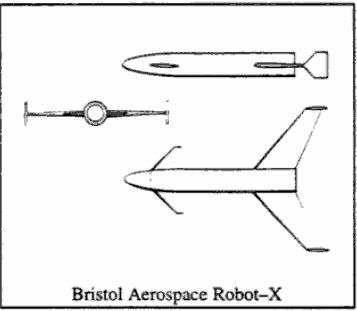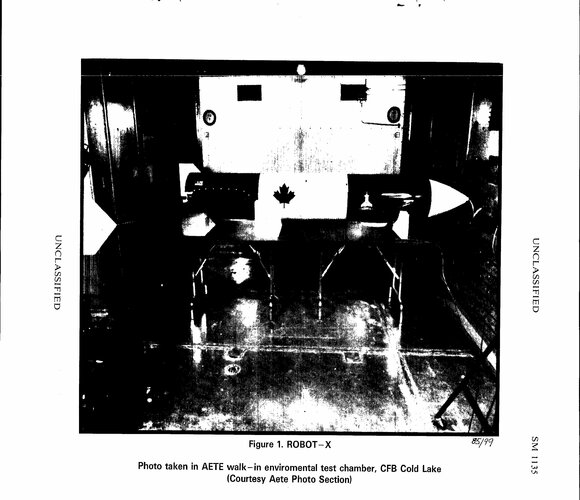Defence Research Establishment Suffield
In 1979, under the auspices of the Technical Cooperation Program (TTCP), a joint US/Canadian feasibility
study was undertaken to improve the US Army Ballistic Aerial Target System (BATS) using Canadian
developed CRV-7 rocket motors. The TTCP program culminated in a vehicle known as ROBOT-5 standing
for “Rocket Boosted Target.” Defence Research Establishment Suffield (DRES) later initiated a program for
both 7 and 9 motor configurations and later developed ROBOT-9.
By 1984 DRES had developed a number of aerial test platforms including:
• ROBOT-9
• ROBOT-5
• TATS-102
• Twin-HULK
• R2P2
ROBOT-5 and ROBOT-9 were proven to be very effective and extremely low-cost, high-speed target drones.
Following their success, DRES began the proof-of-concept development of a winged, rocket-boosted, multistaged
target that was named Robot-X.
The Robot-X drone, designed for travel at high-subsonic speeds, was able to maintain a low altitude hold,
manoeuvre along a pre-programmed path, and have a range greater than 37 kilometres. Wind tunnel tests
were conducted in 1982 and the forward-wing, canard-configured, drone’s design was frozen.



